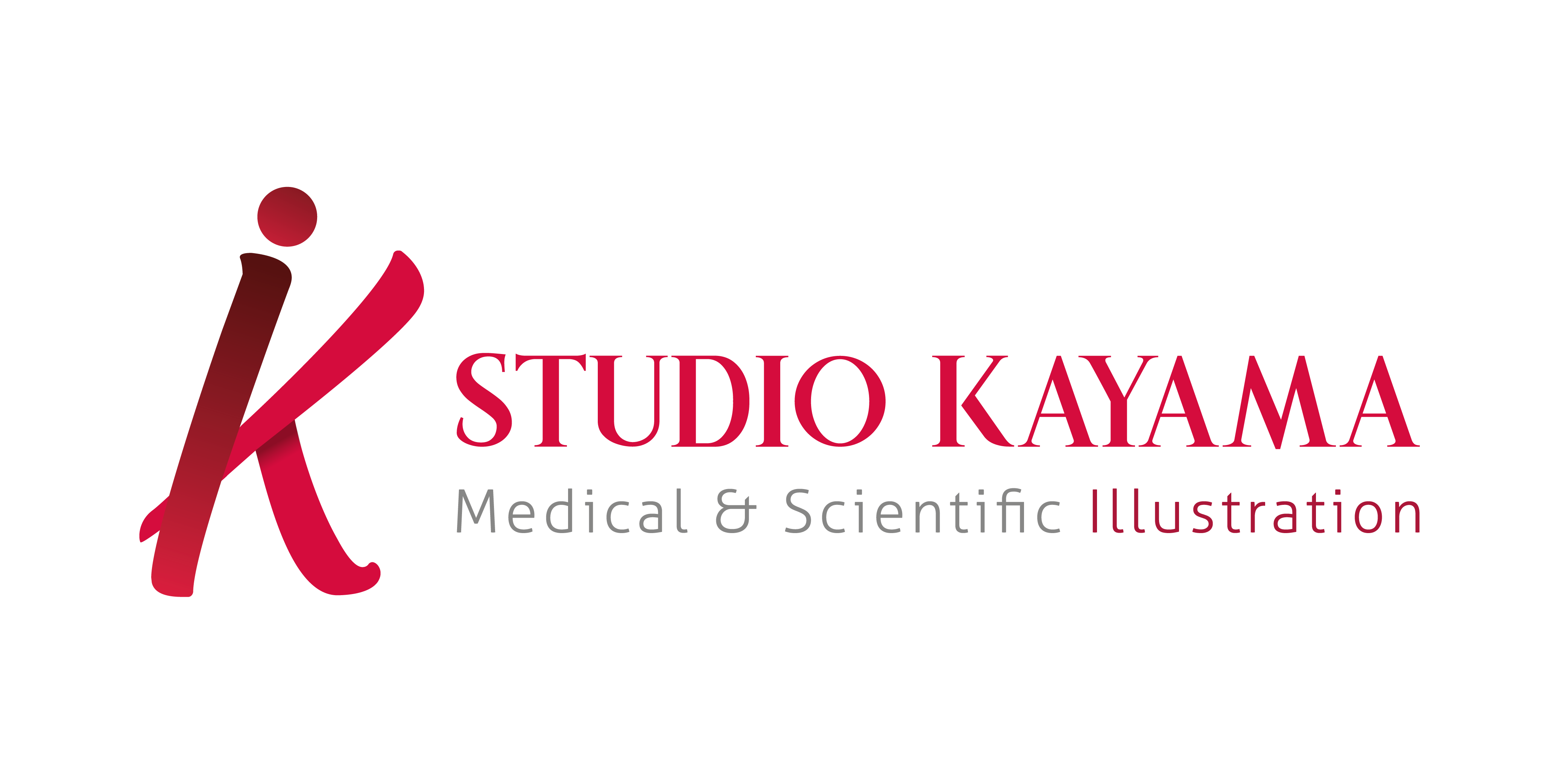Medical Illustration as a communication tool
There are many ways in which people communicate, and visual communications is one of the most successful. Medical Illustration is a field of study that combines medicine, communication, and visualization. By using visuals such as illustrations and photographs, concepts and ideas can be transferred quickly and even transcend languages.

Here is the same information with illustrations:
Even if you don’t know any Japanese words, with images it is simpler to guess that the characters above link to the different parts of the brain.
Information is power, but it is only as useful as it is understandable. As more medical fields become highly specialized, instantly connecting the audience to the niche subject matter will become more and more important.
Illustrations are especially useful in achieving what cameras cannot capture. In medical illustration, complex structures and concepts can be easily visualized. Illustrations have the power to show almost anything that the illustrator can conjure.
The most successful medical illustrations combine accuracy, clarity, and story-telling to selectively render pertinent information to a specific audience. Medical illustrators are highly trained in fields of medicine, science, and art. Their expertise is to solve visual problems using their ability to communicate effectively to a variety of audiences. Medical illustration can be found in a range of formats from textbooks to patient education brochures to presentations teaching surgical procedures.
For a good example of advantages of illustrations over photographs, I created a presentation visual describing a step in a septoplasty procedure performed to correct a deviated nasal septum.
This illustration includes two different viewpoints of the same step of the surgical procedure. On the left is an anterior surgical view depicting the placement of the instruments. On the right is a mid-sagittal section showing the movement of the instruments used. Using arrows is an effective way to clearly show directional motion. Dotted line indicates how far the mucosal layer has to be elevated.
First of all, it is really difficult to stand behind a surgeon to photograph the patient’s nasal cavity. There are usually the attending surgeon, the resident, scrub nurse, and circulating nurse in the room. Photographs cannot capture a mid-sagittal view since it is impossible to slice the patient in half during surgery.
After I presented the illustration that contained two different views of one step, an otolaryngology surgeon commented, “That is really neat how you are showing this. It is so small; it is hard to see what is happening even when you are looking over a surgeon’s shoulder. We learn this step by feel.”
This piece was a product of concise communication between the content expert and a medical illustrator reviewing the anatomy, procedure, and the techniques to accurately portray how the surgery is performed.
Join the discussion and let me know how medical illustration has helped you understand something or found it useful when teaching others. Share a lesson learned from visual communications below, and please share this post if you know others who have benefited from medical illustration.

